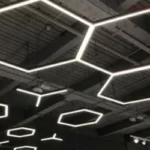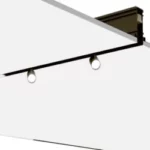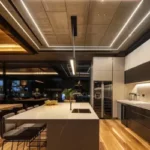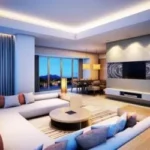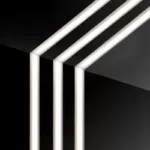[et_pb_section bb_built=”1″ inner_width=”auto” inner_max_width=”none”][et_pb_row][et_pb_column type=”4_4″ custom_padding__hover=”|||” custom_padding=”|||”][et_pb_text _builder_version=”4.2.1″ z_index_tablet=”500″ text_text_shadow_horizontal_length=”text_text_shadow_style,%91object Object%93″ text_text_shadow_vertical_length=”text_text_shadow_style,%91object Object%93″ text_text_shadow_blur_strength=”text_text_shadow_style,%91object Object%93″ link_text_shadow_horizontal_length=”link_text_shadow_style,%91object Object%93″ link_text_shadow_vertical_length=”link_text_shadow_style,%91object Object%93″ link_text_shadow_blur_strength=”link_text_shadow_style,%91object Object%93″ ul_text_shadow_horizontal_length=”ul_text_shadow_style,%91object Object%93″ ul_text_shadow_vertical_length=”ul_text_shadow_style,%91object Object%93″ ul_text_shadow_blur_strength=”ul_text_shadow_style,%91object Object%93″ ol_text_shadow_horizontal_length=”ol_text_shadow_style,%91object Object%93″ ol_text_shadow_vertical_length=”ol_text_shadow_style,%91object Object%93″ ol_text_shadow_blur_strength=”ol_text_shadow_style,%91object Object%93″ quote_text_shadow_horizontal_length=”quote_text_shadow_style,%91object Object%93″ quote_text_shadow_vertical_length=”quote_text_shadow_style,%91object Object%93″ quote_text_shadow_blur_strength=”quote_text_shadow_style,%91object Object%93″ header_text_shadow_horizontal_length=”header_text_shadow_style,%91object Object%93″ header_text_shadow_vertical_length=”header_text_shadow_style,%91object Object%93″ header_text_shadow_blur_strength=”header_text_shadow_style,%91object Object%93″ header_2_text_shadow_horizontal_length=”header_2_text_shadow_style,%91object Object%93″ header_2_text_shadow_vertical_length=”header_2_text_shadow_style,%91object Object%93″ header_2_text_shadow_blur_strength=”header_2_text_shadow_style,%91object Object%93″ header_3_text_shadow_horizontal_length=”header_3_text_shadow_style,%91object Object%93″ header_3_text_shadow_vertical_length=”header_3_text_shadow_style,%91object Object%93″ header_3_text_shadow_blur_strength=”header_3_text_shadow_style,%91object Object%93″ header_4_text_shadow_horizontal_length=”header_4_text_shadow_style,%91object Object%93″ header_4_text_shadow_vertical_length=”header_4_text_shadow_style,%91object Object%93″ header_4_text_shadow_blur_strength=”header_4_text_shadow_style,%91object Object%93″ header_5_text_shadow_horizontal_length=”header_5_text_shadow_style,%91object Object%93″ header_5_text_shadow_vertical_length=”header_5_text_shadow_style,%91object Object%93″ header_5_text_shadow_blur_strength=”header_5_text_shadow_style,%91object Object%93″ header_6_text_shadow_horizontal_length=”header_6_text_shadow_style,%91object Object%93″ header_6_text_shadow_vertical_length=”header_6_text_shadow_style,%91object Object%93″ header_6_text_shadow_blur_strength=”header_6_text_shadow_style,%91object Object%93″ box_shadow_horizontal_tablet=”0px” box_shadow_vertical_tablet=”0px” box_shadow_blur_tablet=”40px” box_shadow_spread_tablet=”0px” vertical_offset_tablet=”0″ horizontal_offset_tablet=”0″]
What is an elastic roof?
First elaborated by Barisol, the elastic ceiling is one of the most modern types of false ceilings in the building interior. This technology is used today in many countries of the world, including Iran, which is very economically viable.
In this article, we are going to introduce you to the elastic ceiling and introduce the type of elastic roof, the advantages and the types of fabrics used in it, and finally the elastic roof tile, its components and the types of lighting used. Let’s check it out.
Elastic fabric
This roof has special features that can be used in interior layout design.
Although this type of coating carries the name of the ceiling, but not just the roof, it can be used as a wall covering, or as a cover for 3D objects or appliances. Board used for interior decoration suspended.
The stretch ceiling is made of PVC fabric with 90% PVC and 5% plasticizer and 5% permitted additives.
The plasticizer in the elastic ceiling allows the roof to be flexible and elastic. That is, by heating the fabric, it can be stretched to the desired size.
As mentioned above, the main material of the PVC elastic ceiling is fixed by the retaining clamps located on the sides of the rails, and the PVC fabric is fixed to the ceiling and prevents deformation.
This type of coating has a thickness of 0.18 to 0.25 mm and weighs about half a kilogram per square meter but can withstand a maximum of 200 kg.
The fabric used on the elastic roof is lightweight and thin building material.
Due to the presence of zinc oxide which destroys bacteria and fungi, it is considered antibacterial and is completely safe and fire-proof due to the presence of chlorine in its formulation. Its types are transparent, semi-transparent, matte and glossy.
Features of this fabric is that it is capable of high quality printing and can create a beautiful combination of design, color and model.
This new technology is highly customizable and can be used simultaneously in a variety of residential, commercial, industrial and exhibition spaces.
Properties and Benefits of an Elastic Roof
Antibacterial and Anti-Dust Properties:
Elastic roofs do not produce dust unlike traditional roofs, and also prevent dust from transmitting behind the roof.
Materials used in the production of these ceilings, such as zinc oxide, prevent the growth and proliferation of bacteria and fungi. For this reason, stretch ceilings are suitable for use in medical facilities such as hospitals, operating rooms and laboratories.
Robust, high weight to withstand possible falls:
These roofs are flexible and secure in the event of an accident (earthquake, material collapse).
These products are guaranteed against loads up to 150 kg / m 2.
Unique Beauty: This ceiling can be used to design the desired decor. In fact, you can turn your imagination into design with elastic ceilings.
Anti-ignition:
Elastic roof is resistant to ignition. That is, it does not ignite against fire and is so-called refractory. It also prevents the spread of fire.
High installation speed with no need for cushioning: Customer can deliver your order within one to three days.
Movable:
If you need the space behind the roof, you can open and close the roof in the shortest possible time. These ceilings can also be moved. If the client moves to a new home, the roof can be opened and reinstalled in the new home.
Covering Plumbing, Wiring, Decay, and Roof Damage: Because the elastic ceiling is a type of false ceiling, it is installed slightly below the main roof, covering all roof failures, fitting paths, pipes and wires.
Electricity draws. An effective feature of elastic ceilings is that they are waterproof so they are suitable for use in wet areas such as pools, bathrooms and bathrooms.
It also helps prevent water leakage in cases such as water pipe bursting, leakage of pipes, and preventing possible damage from water leaks inside the building.
Soundproofing capability:
Materials used in tensile roofing are sound insulation. Therefore, they are ideal for conference rooms, audio recording rooms, concert halls and so on.
Ability to print in a wide variety of colors:
The elastic fabric of the ceiling is capable of printing in a variety of colors that can best match the ceiling with walls, floors, furniture and furniture.
Enlargement and Reflection of Ambient Images:
The Lacquer ceiling is one of the types of elastic ceilings and reflects the images of the environment due to its very smooth surface and mirror. This feature magnifies and gives us visual depth.
Common types of elastic roof coverings
Common and elastic coatings can be opaque, satin, lacquer or mirror, lightweight and textile.
Mirror Elastic Ceiling:
This type of roof, also known as glossy or transparent, has the most distribution and passage of light. Therefore, more light passes through it.
Matte elastic ceiling:
The light distribution is perfectly uniform and has less light transmittance than the glossy ceiling. It also covers the light source perfectly and is best used for simple designs.
Elastic Roof Ceiling:
This type of roof, also known as the transparent type, has the most transparency for light to pass through. This type of coating is used extensively for space that requires natural light to pass through.
Satin stretch ceiling:
The middle is between the glossy and matte finish. The amount of light passing through this type of fabric is relative and is very common. Elastic roofing is one of the most expensive coatings that have a very specific texture and texture and are used for luxurious and stylish spaces.
All introduced coatings can be printed on elastic roof coatings. The relatively low width is a problem that has been faced with stretch ceiling printing before. This problem is solved by UV printing machine.
In other words, the first printing machine in Iran with a width of 5.30 meters is a UV machine that can print seamlessly on the roof in large construction projects. These prints are made in the shortest possible time and in the best quality.
Elements used in elastic roofing
The elastic ceiling or virtual sky consists of three sections of virtual sky structures, lighting structures, and virtual sky tiles.
- Virtual Sky Structure: A false ceiling should be built around the elastic ceiling. In addition, the virtual sky structure requires a false lattice ceiling. The false grid ceiling is placed at a certain distance from the lighting structure.
- Virtual Sky Lighting Structures: If good and accurate lighting is done, it will make the virtual sky look more natural. It uses three types of FOL, T5, LED and T4 lamps and mounts directly to the main roof.
- Elastic Roof Tile: The presence of tile in virtual sky structure is the most important difference between virtual sky and false ceilings. Virtual tile printing is done in both direct and indirect ways and in permitted sizes. Different images can be printed on the tiles. The size of the virtual sky tiles depends on the budget and space of the customer.
[/et_pb_text][dss_masonry_gallery _builder_version=”4.2.1″ images=”27461,27464,27467,27470,27473″ box_shadow_horizontal_images_tablet=”0px” box_shadow_vertical_images_tablet=”0px” box_shadow_blur_images_tablet=”40px” box_shadow_spread_images_tablet=”0px” use_overlay=”off” z_index_tablet=”500″ vertical_offset_tablet=”0″ horizontal_offset_tablet=”0″ /][/et_pb_column][/et_pb_row][/et_pb_section]

